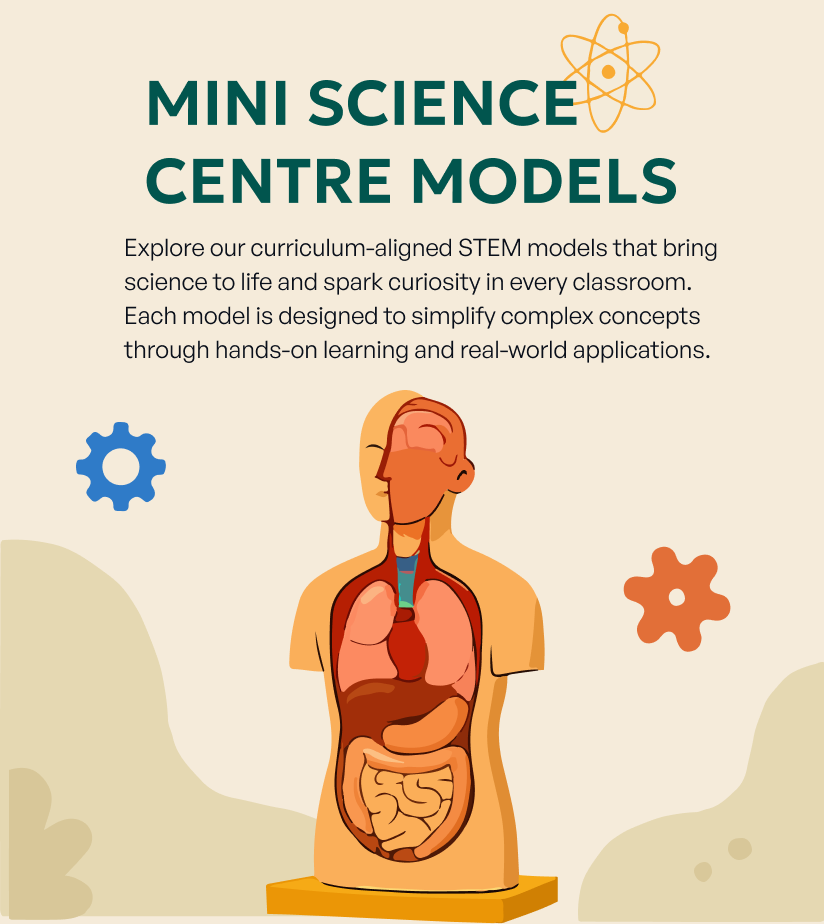
Our Top 6 MSC Models

Day & Night
Day and night cycle causes changing shadows on Earth
The Earth rotates on its axis, which causes the cycle of day and night. When one side of the Earth faces the Sun, it experiences daylight, while the other side remains in darkness, creating night. This rotation takes approximately 24 hours to complete. As the Sun appears to move across the sky, shadows also change in length and direction. This model helps us understand Earth's movement.
Class 5
SSC/CBSE Board

Human Torso
Human anatomy explains body organs and their functions
The human torso refers to the central part of the body and includes internal organs. A life-size torso model offers a clear, realistic view of human anatomy, helping students understand the structure and functions of body parts. Human anatomy is the study of body structures and their forms. These torso models, with removable parts, are ideal for teaching about internal organs.
Class 6
SSC/CBSE Board

Total Internal Reflection
Optical fibers use total internal reflection to bend and guide light efficiently
Light bends when it passes from one medium to another, a phenomenon called refraction. When it moves from a denser to a less dense medium, it bends away from the normal. At a specific angle known as the critical angle, the refracted light travels along the boundary of the two media. If the angle of incidence exceeds the critical angle, the light reflects entirely back into the medium. This is called total internal reflection and it occurs under specific conditions
Class 10
SSC/CBSE Board

Tornado
Atmospheric disturbances causes currents and storms
When the switch is turned on, water begins to swirl in the cylinder, forming a funnel-shaped vortex. This swirling motion is maintained by a pump that circulates water from the bottom to the top. The vortex forms due to the rapid rotation of fluids, similar to how tornadoes form. Such vortexes occur when there is a difference in the velocity of the surrounding fluid. We observe them in everyday life, like in sinks, toilets, or while stirring coffee.
Class 7
SSC/CBSE Board

Infinity Well
Multiple reflections create endless images in parallel mirrors, like in salons
The infinity well model uses one fully reflective and one partially reflective mirror with LED lights. Light bounces between the mirrors, creating the illusion of a deep tunnel of lights. The reflections appear infinite because the light keeps travelling back and forth. When mirrors are parallel, the angle is 0°, giving infinite images using the formula. Infinity mirrors are used for decoration and entertainment in homes, museums, and public spaces.
Class 8
SSC/CBSE Board

